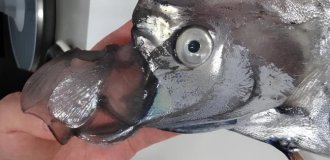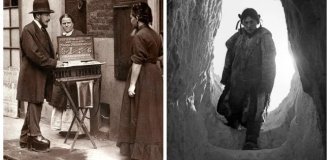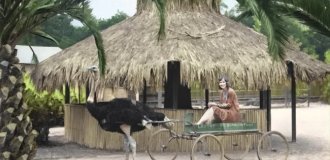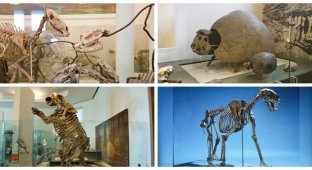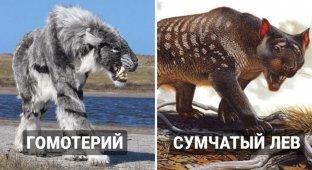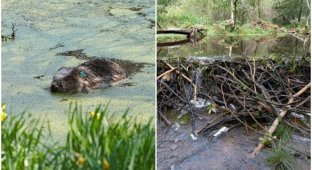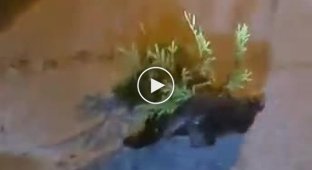Modern beavers are quite impressive animals: a mature male can weigh about 30 kilograms. However, giant beavers (Castoroides), which swam in the waters of North America 10 thousand years ago, reached the size of a small black bear! 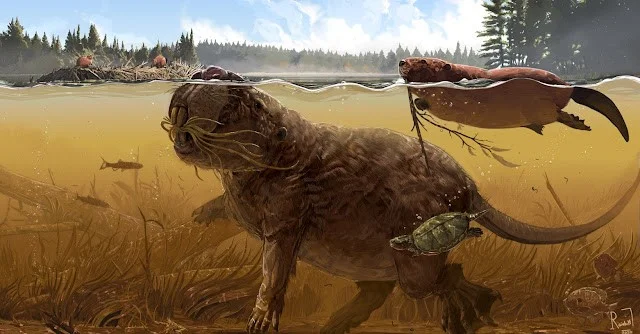
The picture shows that the fossil beaver was at least twice as big as the modern Canadian one.
And this is just one example of the lost diversity of the beaver family, from which only a couple of species have survived to this day. Beavers originated in North America in the late Eocene, about 40 million years ago, and soon reached Eurasia. Some of the primitive representatives of the family dug holes and spent a lot of time underground, but the ancestors of the giant and modern beavers "bet" on a semi-aquatic lifestyle - and they did not lose!
The oldest fossils of the giant beaver are from one and a half to a million years old. They were found in Florida, which was already a fairly green place at that time, covered with forests and swamps. These animals probably originated in the warm southern regions, but as the glaciers advanced and then began to melt again, they spread further north until they reached the polar regions of Alaska and Canada.
The existence of giant beavers was closely associated with wetlands. Judging by the proportions of the body and limbs, these rodents were excellent swimmers. They had powerful hind legs with flat feet and a muscular back - this is indicated by the well-defined spinous processes of the vertebrae. 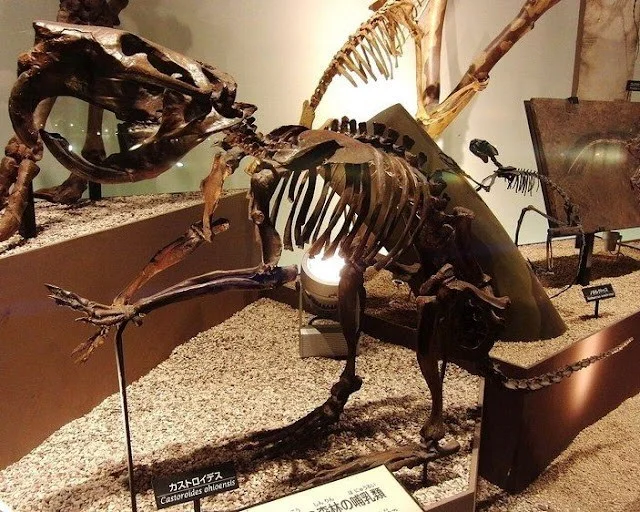
The giant beaver reached about two meters in length, and weighed, according to various estimates, from 77 to 125 kilograms, which makes it the largest representative of the family and one of the largest known rodents, although, of course, not the largest.
Despite the external similarity and name, the giant beaver was not closely related to modern beavers: their last common ancestor lived about 20 million years ago, after which the evolution of these animals followed different paths. The giant beaver also differed in some details of its anatomy: for example, its tail was proportionally narrower, and its teeth were larger, curved and covered with more textured enamel than those of modern beavers. 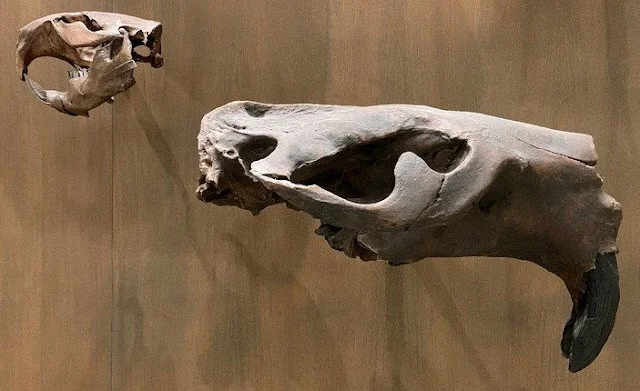
Unlike their modern relatives, giant beavers were not "woodcutters": judging by the isotopic composition of their teeth, the basis of the diet of these animals consisted of soft underwater plants, and not twigs and bark of near-water trees. In addition, while modern beavers have chisel-like incisors, the fossil giant's are more curved and more suitable for extracting nutritious rhizomes from the silt. And if there is no need to gnaw trees, then most likely there will be no opportunity to build dams. This, in turn, could seriously affect the way of life and reduce the number of territories suitable for settlement. A modern beaver can turn even a small stream into a dam suitable for life, which will not freeze in winter, provide protection from predators and allow rodents to have access to aquatic plants all year round. Therefore, beavers are classified as edificators, or "ecosystem engineers", that is, organisms capable of creating or seriously changing their own habitat. Giant beavers did not have such capabilities. Therefore, when the climate began to warm up, the area of swamps and lakes on which the giant beavers depended for their survival decreased, their habitat began to become smaller and smaller, and about 10 thousand years ago the last representatives of the genus died out.
It is unknown whether people played any role in the disappearance of these rodents: the bones of giant beavers were found together with human artifacts, but the period of coexistence of these species is estimated at most at a thousand years, and no evidence has been found that the Paleo-Indians hunted these animals en masse. However, in the myths of some peoples, for example the Cree and Ojibwe, giant beavers are mentioned, which may be evidence of people's encounters with such an animal or, at least, their acquaintance with its remains.
I wonder if the Poles would have fought with such beavers?
Add your comment
You might be interested in:








